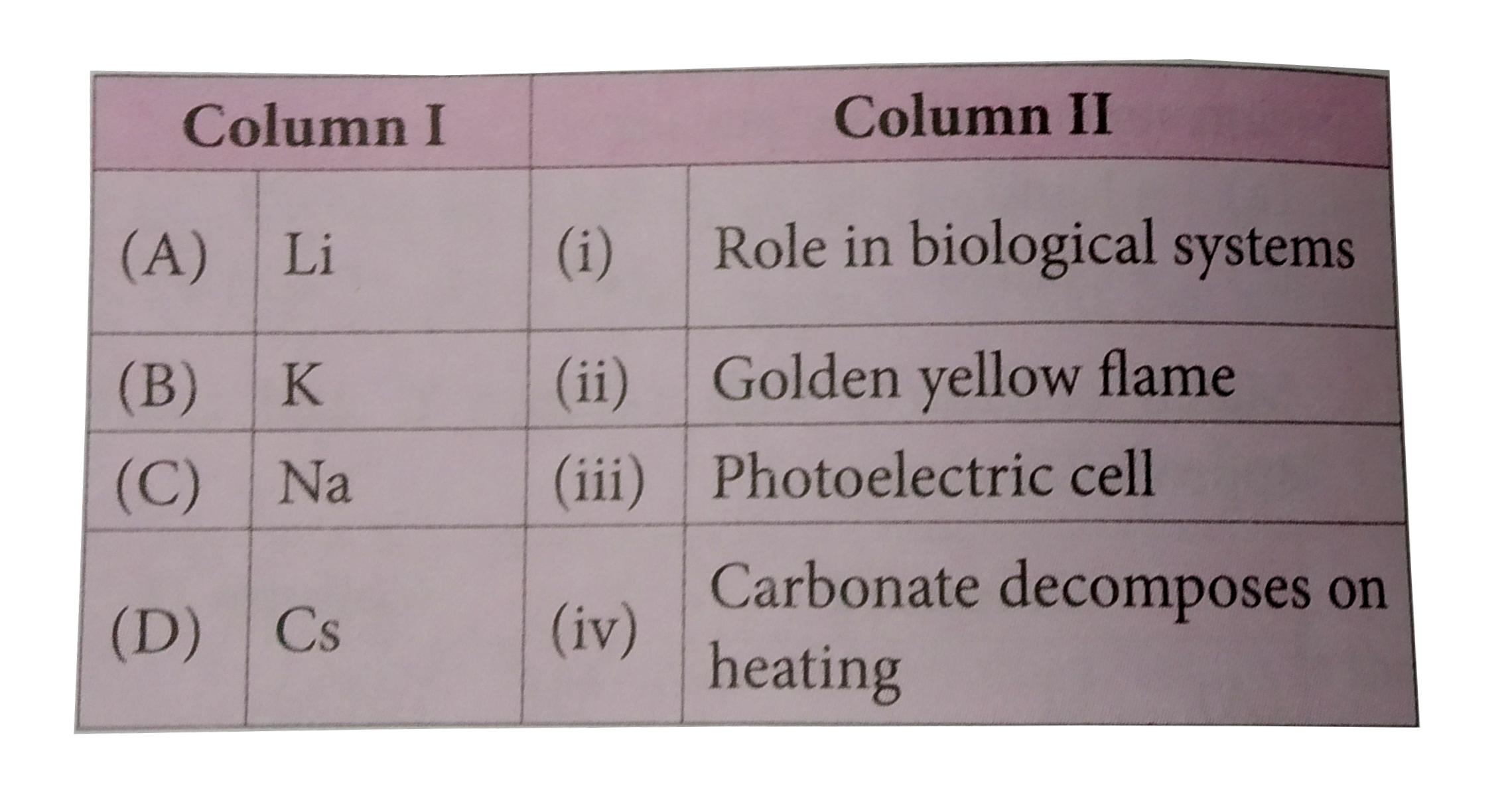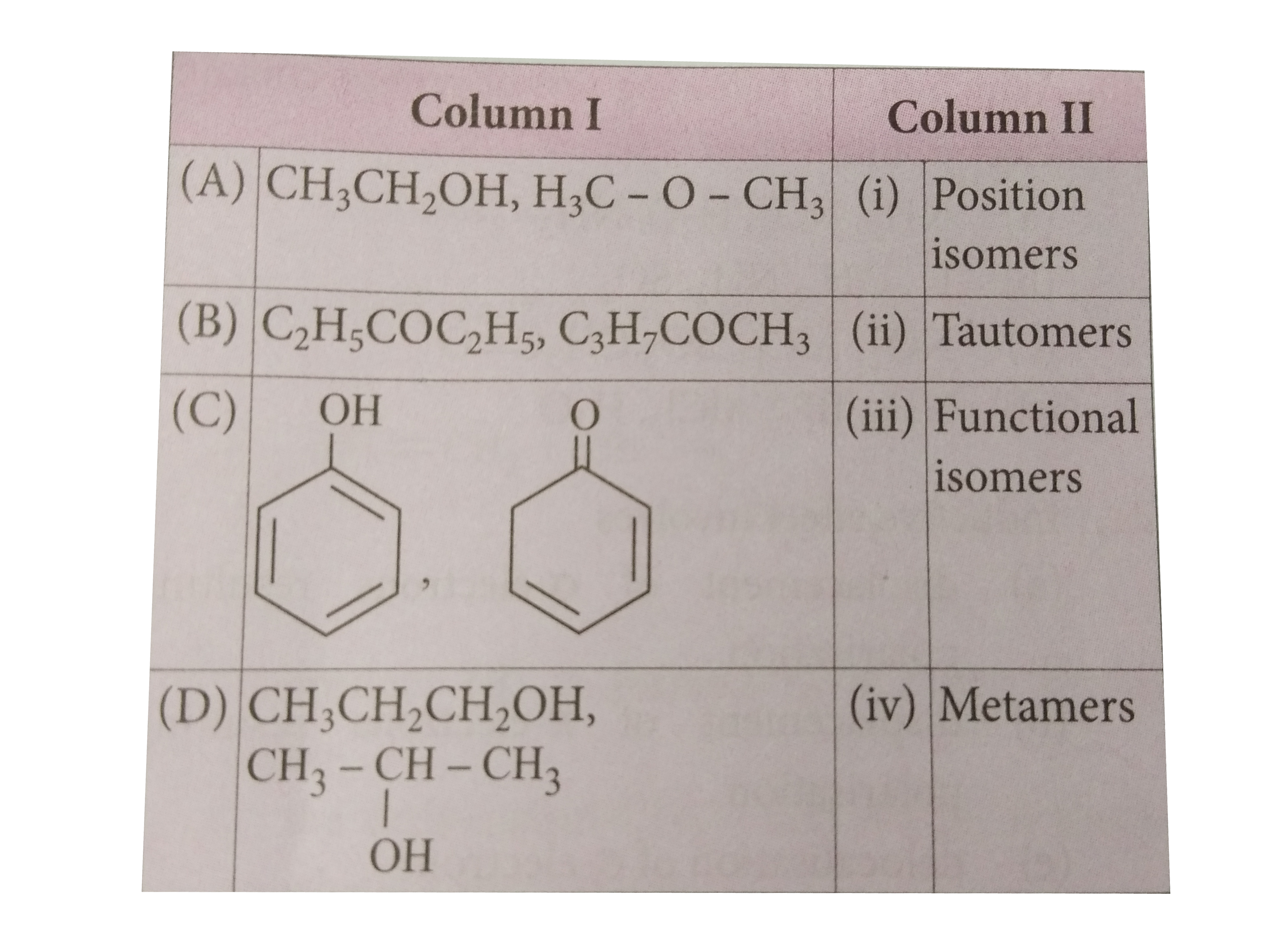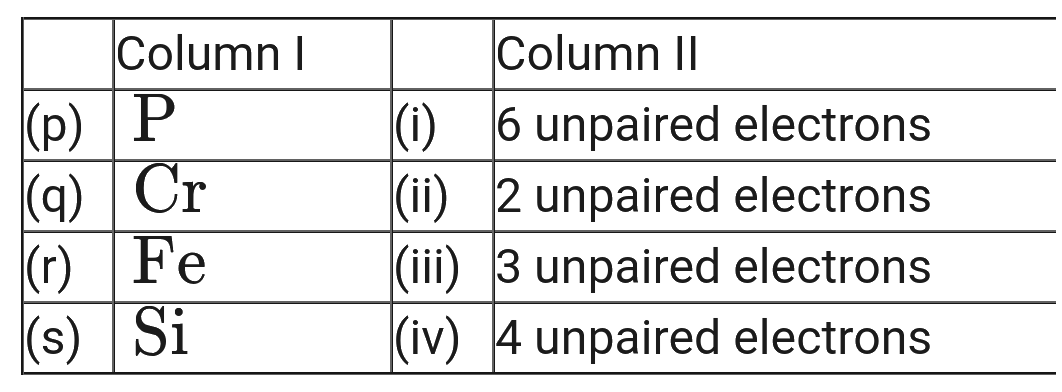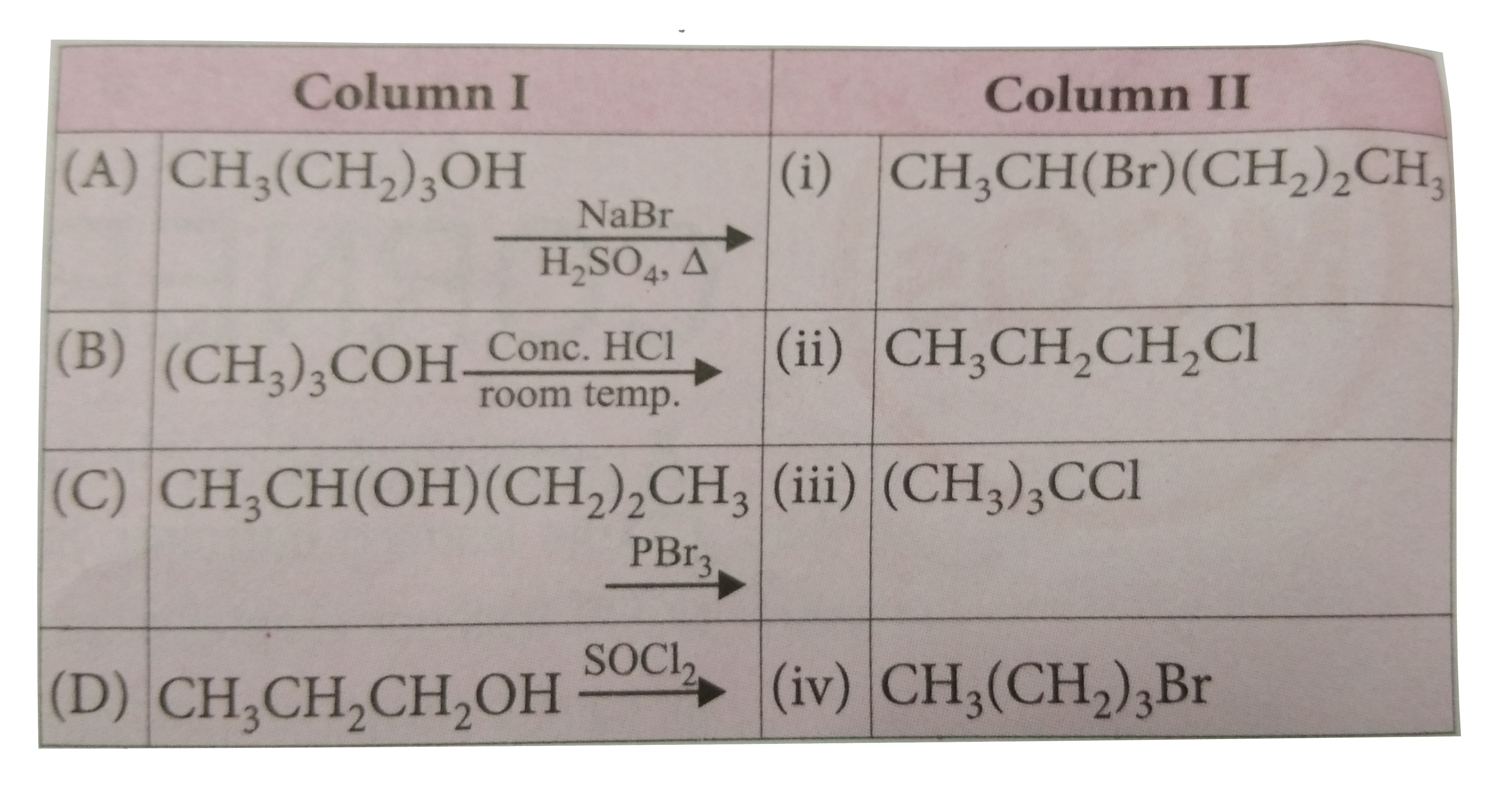Match the colume I with column II and mark the appropriate choice.
Column IColumn II(A)Liquid⇐====================⇒Vapour(i)Saturated solution(B)Splid⇐====================⇒Liquid(ii)Boiling point(C)Solid⇐====================⇒Vapour(iii)Sublimation point(D)Solute(s)⇐====================⇒Solute(solution)(iv)Melting point
(A)→(i),(B)→(iii),(C)→(ii),(D)→(iv)
(A)→(ii),(B)→(iv),(C)→(iii),(D)→(i)
(A)→(iv),(B)→(ii),(C)→(i),(D)→(iii)
(A)→(iii),(B)→(iv),(C)→(ii),(D)→(i)
The correct Answer is:B
Topper's Solved these Questions
- EQUILIBRIUM BOOK - NCERT FINGERTIPSCHAPTER - EQUILIBRIUM EXERCISE - Equilibrium In Chemical Process - Dynamic Process
4 Videos
- EQUILIBRIUM BOOK - NCERT FINGERTIPSCHAPTER - EQUILIBRIUM EXERCISE - MCQ
3 Videos
- ENVIRONMENTAL CHEMISTRYBOOK - NCERT FINGERTIPSCHAPTER - ENVIRONMENTAL CHEMISTRYEXERCISE - Assertion And Reason
15 Videos
- HYDROCARBONS BOOK - NCERT FINGERTIPSCHAPTER - HYDROCARBONS EXERCISE - Assertion And Reason
15 Videos
Similar Questions
Match the column I with column II and mark the appropriate choice.

View SolutionMatch the column I with column II and mark the appropriate choice.

View SolutionMatch the column I with column II and mark the appropriate choice.

View SolutionMatch the column I with column II and mark the appropriate choice.

View SolutionMatch the column I with column II and mark the appropriate choice.

View SolutionMatch the column I with column II and mark the appropriate choice.

View SolutionMatch the column I with column II and mark the appropriate choice.

View SolutionMatch the column I with column II and mark the appropriate choice.

View SolutionMatch the column I with column II and mark the appropriate choice.

View SolutionMatch the column I with column II and mark the appropriate choice.

View Solution
